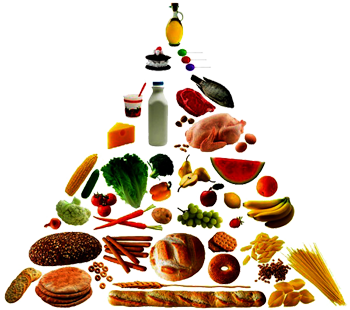
Surely you’ve heard the term “food pyramid” or “pyramid of healthy eating”. Have you ever wondered what it actually is?
Food pyramid is a visual representation of planning well balanced meals. Foods from the bottom (base) pyramid should be regularly consumed, while those from the top can sometimes be used in small quantities. Applications for food in the form of a pyramid has become common, and there are many custom pyramids by country / region in diet or illness.
So let’s say there is a Mediterranean pyramid in which the olive oil and fish is lower in the pyramid because they are used more often. There are also vegetarian or vegan pyramid who do not use some of these basic foods on the diagram. As for the pyramid for some diseases, the most famous pyramid for diabetics, although there are pyramids and other diseases in which the representation of certain foods in the diet placed so that it is best for health.
Food pyramid and foods in it
The base of the pyramid are foods that should be the staple food and are rich in carbohydrates. Cereals, bread, pasta, potatoes, corn and corn products. The highest daily intake of calories is preferable to be in this group.
Fruits and vegetables in a layer above the grain and to eat them often because they contain plenty of vitamins, minerals and dietary fiber. Vegetables and fruits should also be the basis of nutrition.
Milk and milk products, preferably with a lower fat content, should be consumed because they are rich in calcium, which strengthens bones and reduces the risk of osteoporosis. Meat, fish and eggs contain plenty of proteins that are essential building blocks in the body. Proteins (proteins) are important for growth and development.
At the top of the pyramid are foods that should be consumed at a minimum. These are fats, oils, snacks and sweets. These are high-energy foods and they should be limited in the diet.




